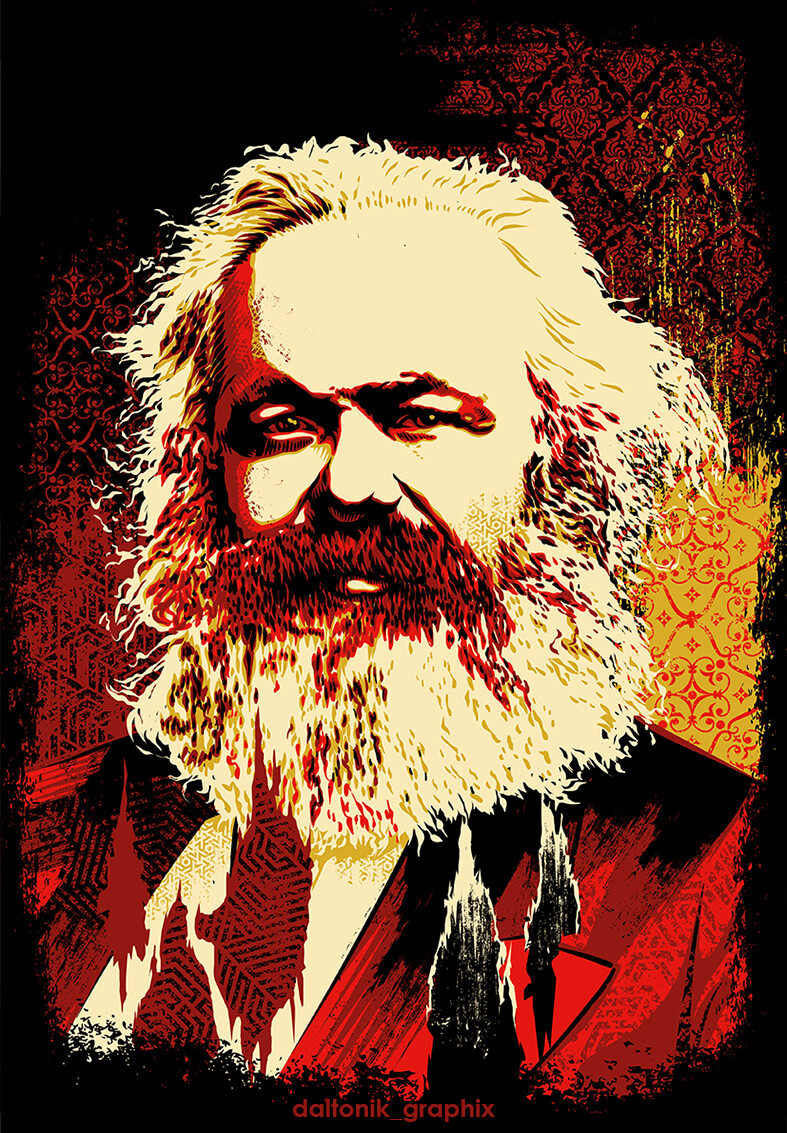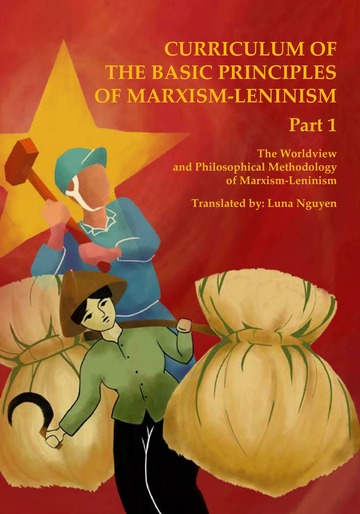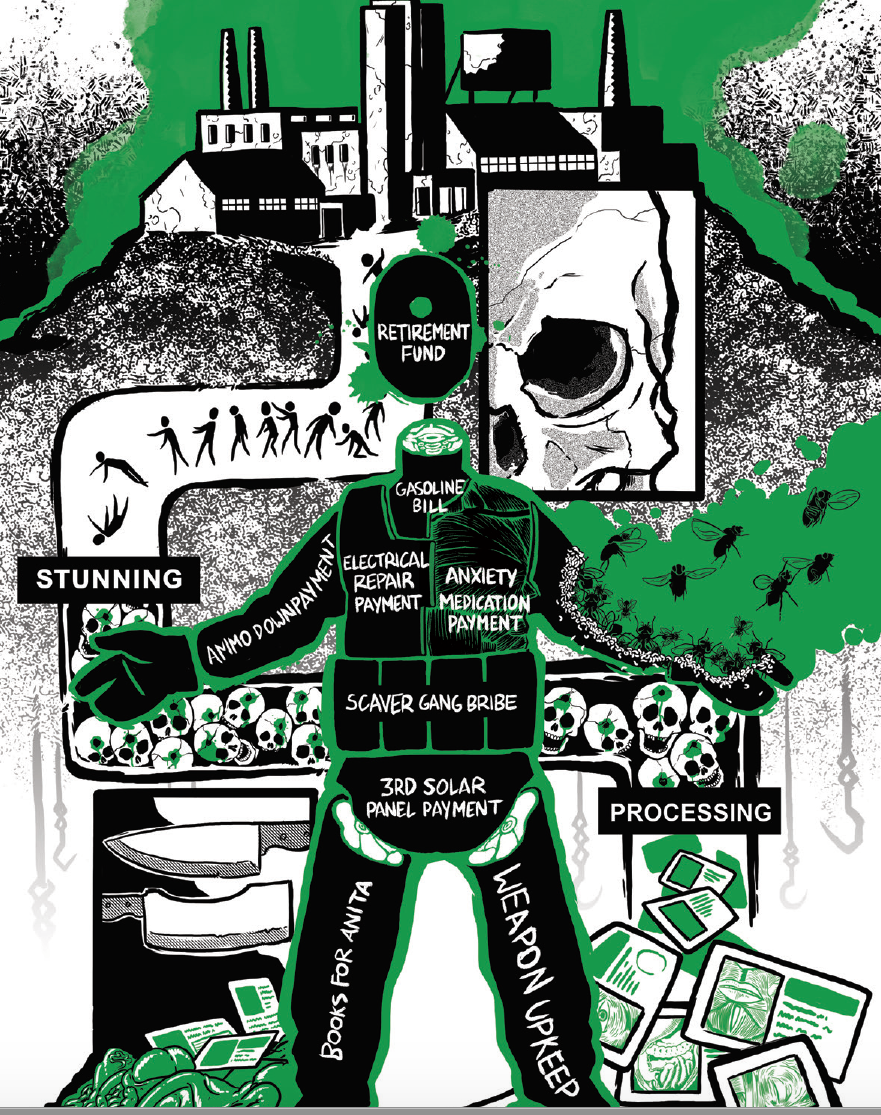- cross-posted to:
- marxism
- cross-posted to:
- marxism
It’s available for free (officially) at the link. We can have a weekly discussion for a section/chapter/part etc.
Hell yeah. We're still working our way through vol. 1 of Capital in the Deprogram book club but this might have to be bumped up to next in line.
100%.
PS ebook is free and if you want to support Luna you can buy a paperback.
Luna is the Zampano of Vietnam, cataloguing the cosmic horror of capitalism
think its referencing the annotations. there's a ton, and the book House of Leaves is known for being nearly indecipherable (purposefully, as a narrative device) due to the amount of annotations from different POV's.
Yeah I see now. Bro I read pretty much every footnote in HOL :lenin-sleeping:
Luna wasn't trying to make a new textbook. She is adapting a Vietnamese textbook for English speakers, who might not have knowledge on certain topics which Vietnamese students would be assumed to have built in previous schooling.
Looks like there is some interest!
I don’t really know how to organise a group so…maybe let’s try to read the Introduction by next Sunday (April 9th)? That goes on till Page 48. I don’t know if that’s too much or too little. IMO, let’s just start and see where we are by the end of the week and adjust as appropriate.
Or if someone else is more experienced, you can takeover lol.
Tagging everyone who commented:
@MiraculousMM @GarbageShoot @LENINSGHOSTFACEKILLA @Grimble @MC_Kublai @MaoistLandlord @shipwreck @creator @zifnab25 @ChapoChatGPT @AHopeOnceMore @Nakoichi @Assian_Candor @Solara
I will try, I actually am waiting for the book in the mail right now! But I can read online
Hey, did you manage to read the introduction yet? If so, what did you think?
Ahhh fuck my life is crazy right now I haven't read it. I may come back and talk about a lot of this stuff but I probably won't be able to keep up - life falling apart
Hey, did you manage to read the introduction yet? If so, what did you think?
Thanks for checking in!
Most of the way through! Enjoying it a lot. Lovely to see concise, grounded ML theory and amazing to think that students in Vietnam learn this stuff.
Ok. I don't want to be that guy, but...
If over half of the text in a given chapter is marked "Annotation", your book is poorly laid out.
I got my physical copy a few days ago and I'd love to dive into it with comrades!
I've read the intro, so here are my random thoughts:
-
The annotations are too unwieldy, so what I did was first read the chapter ignoring the annotations before going back to read just the annotations. The annotations actually have pretty good info and give much historical context. However, I think reading the text straight through completely destroys the flow of the original text, which is why I've settled on original text only->annotations only.
-
Besides that, it just gives a general overview of how Marxism-Leninism was developed. Karl Marx used the philosophy of British classical economists like Adam Smith, the political experience of French utopians like Fourier, and Hegel's dialectics to develop Marxism. Lenin would then take this Marxism and, through further development of the philosophy in the age of imperialism, develop it into Marxism-Leninism.
-
The original text isn't very Vietnam-centric. It's only the last view sections where they start mention Ho Chi Minh thought.
-
I think Luna and EJ tailored the translation so that someone who has never read a single Marxist text could at least follow what the text is saying. This is why the annotations are thorough to the point of being excessive. They basically took a Vietnamese college textbook and added a bunch of stuff that presumably would've been covered in a Vietnamese secondary school textbook.
Edit: Here's a video where they discuss parts of the intro: https://www.youtube.com/watch?v=nJzaCUicwCw&t=3240s
That’s a great tip. I managed to read about half the intro + annotations. I think you’re spot on. It feels like they added every possible annotation they could think of (worldview, viewpoint etc) which feels excessive. But I appreciated the ones about Vietnam and their history etc. There’s also a lot of repetition! But I’ve been enjoying it so far.
-
Finished with Chapter 1 Dialectical Materialism:
-
I slightly modified the way I read the text. Instead of going original text only->annotations only, I've settled on reading original text + short annotations only -> long annotations only. Not all the annotations are super long, and reading a three sentence annotation by itself out of context is also not good. I've decided this is the best balance between just reading the text straight through and doing original text only -> annotations only.
-
This chapter draws heavily from Marx and Engels's The German Ideology, Engels's Dialectics of Nature, and Lenin's Materialism and Empirio-criticism. I feel like most people rarely talk about Dialectics of Nature and especially Materialism and Empirio-criticism. When people think of Lenin, they think of State and Revolution, Imperialism: The Highest Stage of Capitalism, What is to be Done, and so on. Nobody thinks of Materialism and Empirio-criticism.
-
I think it's very good the book start with dialectical materialism since I feel most Western leftists are terrible at understanding the world in a dialectical faction. Before even discussing political economy or class struggle, they need to understand how to think dialectically. Most Western leftists settle on being undialectical, whether as undialectical idealists who think class struggle can be won through having better morals or undialectical materialists who see economic forces as inevitable and not subject to the conscious action of humans.
-
It was interesting how it relates sentiment as a means in which the physical world affects our consciousness. In other words, being struck by the beauty of flowers is a means in which flowers affect your consciously through their aesthetic qualities. Willpower, in turn, is how human consciousness affects the physical world. You can see an artist as having these factors in a dialectical relationship: beauty of the world inspires them and through their willpower, they create beautiful art that makes the world more beautiful, which further inspires them to create more art.
-
From the text, consciousness is developed through labor and social activity.
-
The Preface of Part 1 before the formal beginning of the chapter discusses the difference between dialectical materialism and materialist dialectics. Honestly, it mostly flew over my head, but materialist dialectics is chapter 2, so I might have a better idea of what it is.
-
I'm really struggling to understand why this comment section is being so negative about the notes.
I barely have a Marxist theory background to draw from, so the annotations are helping me immensely in developing the concepts in my head, specially as some later stuff gets tricky. A lot of it would completely fly over my head if it wasn't the case.
I'm currently translating it to my native language to better structure the party meetings. The current ones are all over the place.
Done with the first two sections of Chapter 2 Material Dialectics:
-
I'm beginning to understand the difference between dialectical materialism and material dialectics. Dialectical materialism is more about the dialectical relationship between the material world and consciousness while material dialectics concerns itself with how things within the material world are related and interconnected.
-
The chapter is super long. It's like longer than the intro and chapter 1 combined lol. However, chapter 2 was super dry with numerous quotations while this chapter is mostly long because the annotations have diagrams. So far, this chapter is fairly easy to understand. Part of it is also because Luna and EJ went over these concepts in previous streams while they were working on the translation, so it's stuff that I've been exposed to before. Unfortunately, it's virtually impossible to find which videos have them.
-
When I said chapter 2 is fairly easy to understand, I spoke way, way, way too fucking soon because section 3 was kicking my ass lmao
-
Section 3 was long with multiple 4+ pages of annotations, and unlike the previous sections and chapters, it's material that I've never seen before. In summary, it outlined categories used in materialist dialectics.
-
The first pair is private and common. This one is the one that I had the trouble with the most. So out of a section of chapter 2, it's this section of a section that I had trouble with. The pair is supposed to be used within the context of a set of things, with private being each individual member and common being the set itself. My first confusion was that it discussed about categories, but it also discussed attributes, but unlike the category, there are three attributes: private, common, and unique. So, the question I had was why talk about private and common instead of unique and common? My eventual understanding is that private as a category encapsulates all three attributes. So, within a given set of things, each member has attributes that is completely unique and attributes that it shares with at least one other member. The attributes, both those completely unique and those that it shares with other things, form its own private attributes. Unique and common wouldn't work because they're basically polar opposites while private and common would work because the privates of each individual member cannot exist without a common which binds the members of the set together and the common exists as a partial aggregate of some attributes of the privates. I think understanding this section of a section has great ramifications in understanding how different social movements relate to one another and what commonality could be extracted from them.
-
Reason and result is pretty easy to understand. It's just cause and effect except with a greater focus on how humans cause things.
-
Obviousness and randomness is just about how some things are straightforward and deterministic while other things are basically random and how some things that are random could be set up to be more deterministic in your favor.
-
Content and form is another big one. Content is about the sum of the constituent parts of a given thing while form is the relationship those constituent parts have with each other. The easiest way to visualize this is to imagine a ball-and-stick model with the content being the sum total of atoms/balls and the form being sum total of the bonds/sticks. This extends to ideas as well. Art itself has an idealist content but a physical form. This is very interesting to consider. You could view art as having a physical content and form, which is where you get "it's all pixels in a screen" or "it's just paint on canvas," but when viewed as having idealist content and physical form, the physical artform is a means of expressing an aesthetic meaning or artistic intent. This isn't the first time the text includes the study of aesthetics. Perhaps Luna is an artist in real life?
-
Essence and phenomenon is about the internal aspects of a given thing vs the external manifestation of those internal aspects. I can't help but view essence as just content and form plus some other stuff added in because content and form relates to internal aspects, but I'm not sure if this is correct.
-
Possibility and reality is pretty straightforward.
-
The last section is just discussing quantity and quality, unification and contradiction, and the negation of the negation. This is familiar ground to me, so it wasn't particularly hard.
-









